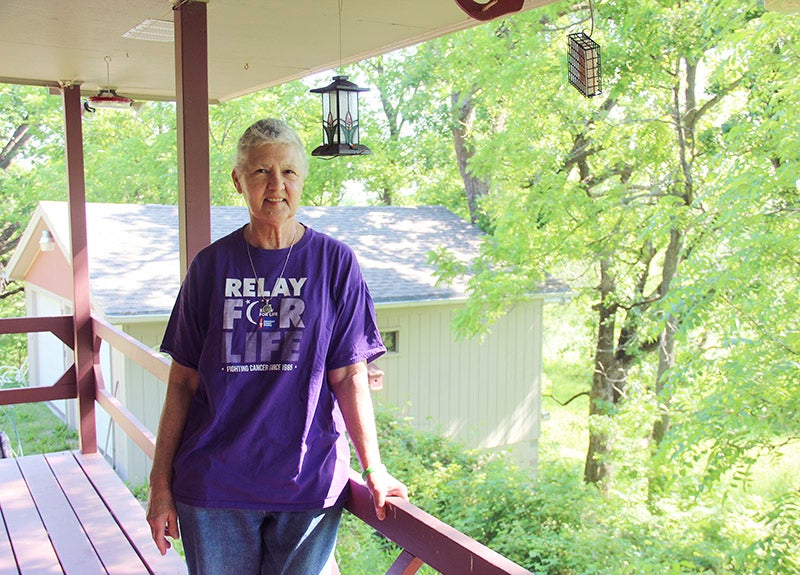Man’s handmade cribbage boards are an Albert Lea classic
Published 8:00 am Sunday, January 12, 2014
Some might know Russ Anderson for his years selling life insurance for Lutheran Brotherhood. Some might know him for his woodworking hobby.
But the 91-year-old has come to be known for his handmade cribbage boards, many them with either his initials of ROA stamped in the wood or a return address sticker on the back showing the name Russell O. Anderson and the address of 1104 Marie Avenue.
He estimates he has made more than 200 boards over the past 25 years.
Some of his best-known cribbage boards are ones he made for several years for fundraising auctions held by the local chapter of Ducks Unlimited. They feature shotgun shells glued into the woodwork. The scoring pegs are blank rifle casings holding unfired bullets. But he also makes them adorned with presidential coins, Indian head pennies, John Deere ornaments, Albert Lea memorabilia, golf balls or nothing at all, letting the wood be the star.
Anderson makes the cribbage boards from ash, maple, oak, hickory and cherry. The maples vary, from spalted to bird’s eye.
He makes bowls, cars, trains, airplanes, helicopters, pencil cups, dolphins, propellers, bill holders, paperweights and picture frames, among other things.
“People say, ‘How do you think of all that stuff?’” Anderson said. “Oh, I don’t know. It just comes to mind.”
Woodworking is a hobby, so he makes what motivates him, he said. He does it for self-satisfaction.
A grandson wanted a helicopter. Anderson’s friend, retired judge Jim Broberg, had given him a bundle of walnut that he didn’t want to burn. Anderson took a look at one of the pieces of wood.
“The thing was just shaped like a helicopter,” he said.
It was round in the front and narrow in the back. He shaped it into a helicopter, and the boy took it to school for show-and-tell, not letting anyone actually play with it.
Anderson grew up in Faribault, graduating from high school at the age of 16. He first gained an interest in woodworking in shop class in school. He still has an ash baseball bat he made when he was 14. He worked for Nutting Truck & Caster Co. for two years, then from May to October of 1942 he worked on ships for the U.S. Navy in Bremerton, Wash. One was the damaged USS Nevada, the only battleship to escape Battleship Row in the Japanese attack on Pearl Harbor. After the war, that ship was a target for a testing a nuclear bomb at Bikini Atoll.
He was offered a transfer to work on ships at Pearl Harbor, where his supervisor said he could avoid the draft. He had been eating at the naval base where sailors were telling him they were fighting the fight for him and he was getting the money.
“I’m not going to listen to that every day,” he said.
Anderson enlisted in the Army Air Force and worked as a flight engineer on Martin B-26 Marauder bombers.
He was on a furlough and a friend from Faribault asked him to go on a double date with St. Paul girls. The one he dated now is his wife, Carol. They have been married since June 12, 1946. They have three children, David Anderson of Albert Lea, Deborah Deem of Littleton, Colo., and Scott Anderson of Pensacola, Fla.
Russell O. Anderson has a Shop Smith drill press in his basement. It can turn on its side and function as a lathe. The unit also has a band saw, a big belt sander and a joiner. He said he got the entire set for a steal 20 years ago. He likes a good deal.
He had a drill press and a sander he purchased at cost at Montgomery Ward 40 years ago. An auctioneer advertised in the Tribune Classifieds he was selling a Shop Smith set for $1,100, when it was normally just $2,500 for the drill press alone. Anderson squeezed him down to $900 and got him to deliver it, too. Anderson sold his old press and sander to a neighbor for about $800.
Anderson sold life insurance for 44 years. After getting out of the military, his brother-in-law in Osage, Iowa, invited him to be a district manager for part of a territory he had in northern Iowa with Lutheran Brotherhood, which nowadays is Thrivent Financial. The Andersons lived in Thompson, Iowa, but soon he grew tired of having to buy out-of-state hunting and fishing permits in Minnesota. His brother-in-law asked for additional territory. The company granted it, and that allowed the Andersons to move to Albert Lea.
He retired in 1990 at the age of 69. His desk still has an eight-day clock from a B-26 bomber — held by a walnut wood panel Anderson made after getting out of the service.
His first cribbage boards didn’t turn out so well. He keeps the rejects in his basement. He gets his wood from scraps friends give him or from the Albert Lea location of Root River Hardwoods, which does kiln-dried woodworking in homes such as flooring, paneling and stairs.
He got better at making boards and started selling them locally, including to banker Kenneth Kranz of Northwestern Bank. Kranz later was transferred from Albert Lea to Minneapolis to Denver. He had to start a bank from scratch in Glenwood Springs, Ariz., and wanted to sell the cribbage boards. Anderson sent 18. Pierz native John Stumpf, who later became the CEO of Wells Fargo, bought two boards and sent Anderson a letter.
It said: “Thanks so much for the cribbage boards. They are beautiful. I’m keeping one and sending the other to my dad in Pierz, Minn. (between St. Cloud and Brainerd) for his 75th birthday. He loves cribbage but can’t seem to move the pegs well in those little boards. He is a retired farmer with stiff fingers.”
Jim Malepsy of Ducks Unlimited encouraged Anderson to make some of the gun-oriented cribbage boards for auction fundraisers. Anderson doesn’t know how much they fetched, but he knows one was at $124 and rising in a silent auction when he left.
He gave five boards to Youth for Christ for an auction at Prairie River Camp near Bricelyn. They went for a total of $275.
Anderson cribbage boards for airport manager Jim Hanson, who brought them to Canada on a fishing trip. One of Hanson’s buddies wanted some with fishing lures and Canadian coins embedded. The tackle required a laser cutter, which Anderson didn’t have. He ended up making two boards, one with a coin called a toonie and one with a lure, for which Anderson carefully chiseled out the space.
The man bought them, but Anderson told Hanson to give a third board — with shotgun brass in it — to former Minnesota Vikings coach Bud Grant, an avid hunter and cribbage player.
Grant sent Anderson a note. One line states: “It is by far the finest cribbage board we have played on and does encourage more games.”
It is getting more difficult to buy one of his cribbage boards. He said as he ages, it gets harder to work his Shop Smith.






